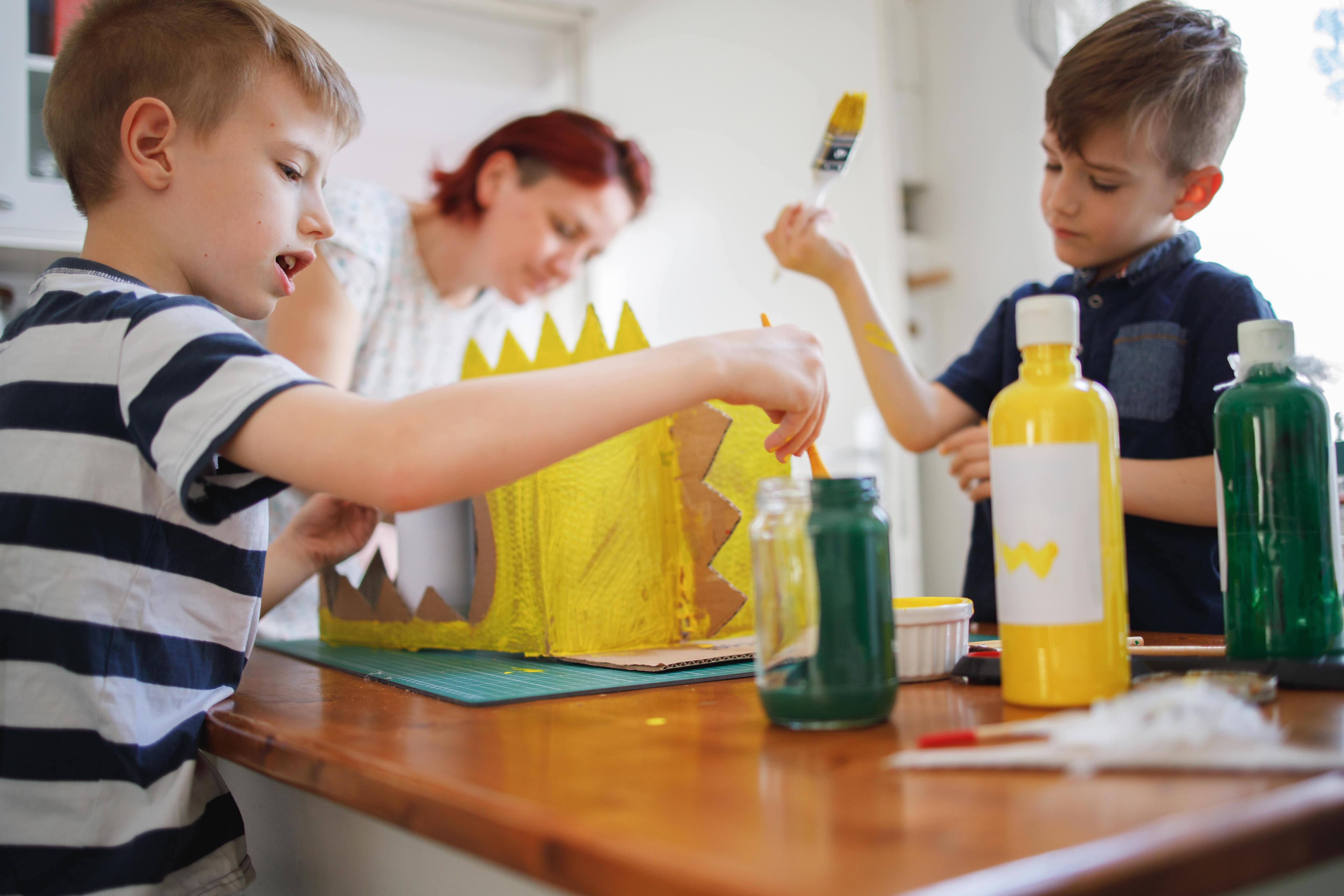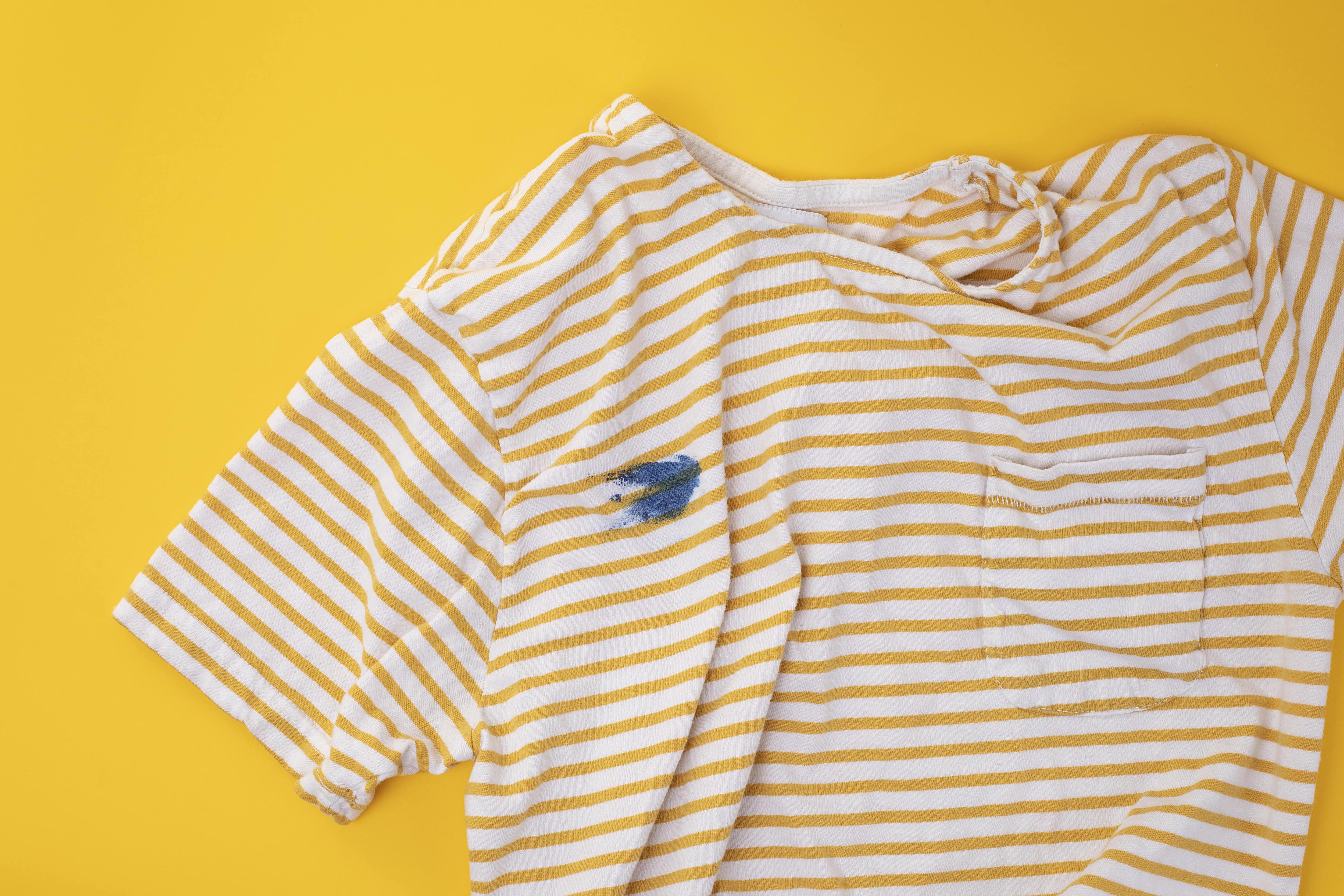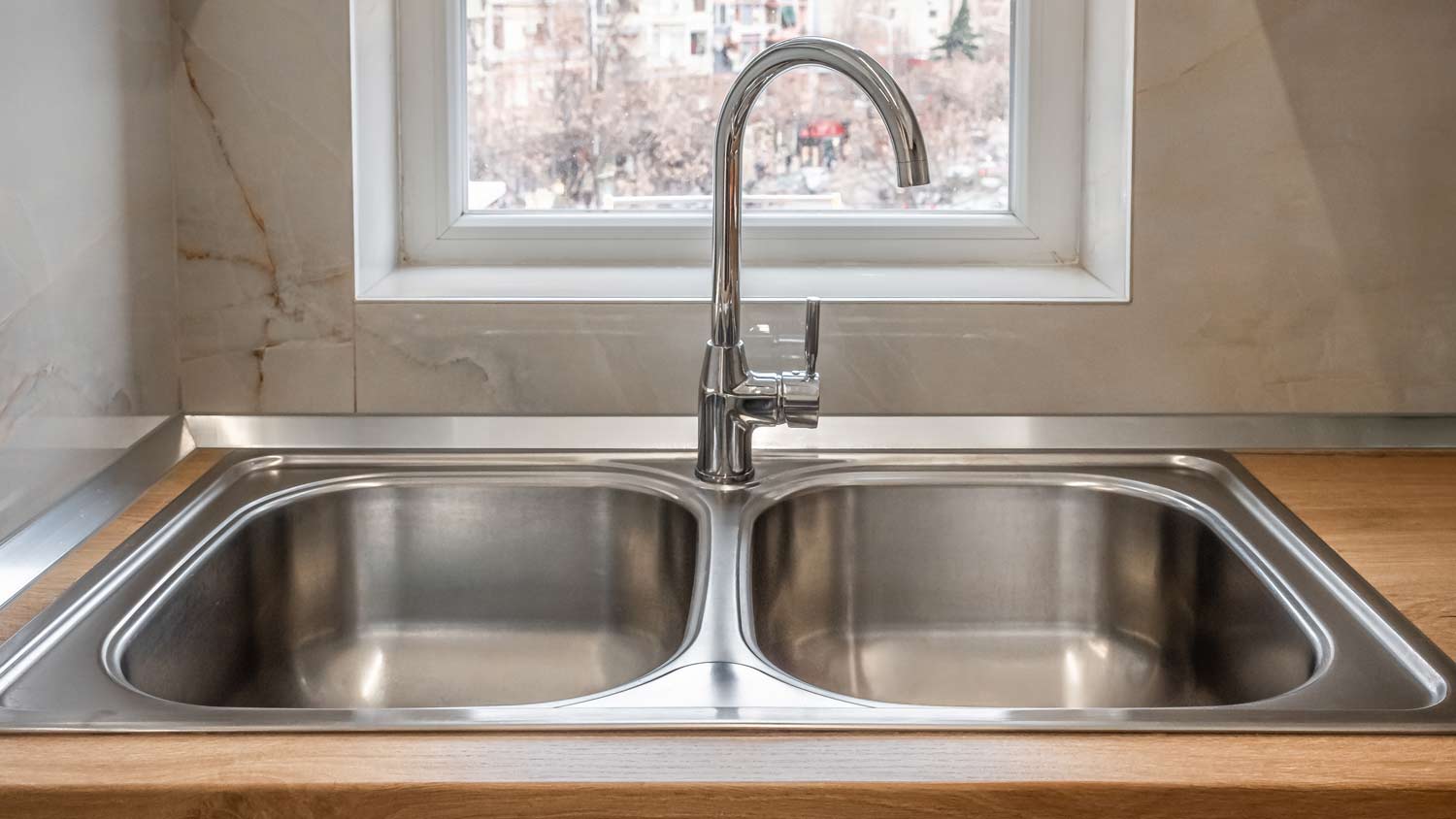How to Get Paint Out of Clothes Without Ruining Them
For those “oops” painting moments


It happens to the best of us. Despite your best efforts to keep your clothing protected while painting, sometimes stains are inevitable. Whether you were adding a few spots of touchup paint, or working on a paint project with your kids, accidents happen. There are different methods when removing paint stains, depending on the type of paint that was used and the type of fabric. Read on to learn how to get paint out of clothes to salvage your favorite garments.
How to Get Latex Paint Out of Clothes

Latex is a commonly used water-based paint for interior paint projects. Once you realize you have a paint stain, it’s important to act fast because it becomes much harder to remove it once it’s dried. Start with the most gentle method first to avoid damaging the fabric.
Begin by scraping off any excess paint with a spoon, credit card, butter knife, or a toothbrush for more delicate fabrics.
Blot up the remaining paint with a wet paper towel.
Flip the garment inside out and run hot water over it to flush the remaining paint out of the fabric.
Pre-treat the stain by blotting dishwashing detergent on the spot.
Wash the garment in cold water.
Dry the article of clothing (only if the stain is completely gone, otherwise drying it can further set the stain).
If the stain is persistent, you may need to try a more aggressive method:
Put a few drops of rubbing alcohol or nail polish remover on a paper towel or rag.
Apply the rubbing alcohol or remover to an inconspicuous spot on the garment to ensure the fabric can handle the stronger chemical.
Blot up the stain with the paper towel or rag to remove the remaining paint.
If the stain persists, saturate it more with the rubbing alcohol or nail polish remover and apply pressure to the spot using a sponge or toothbrush.
Note: Delicate fabrics may not handle the friction of a sponge or toothbrush, so it’s best to bring them to a professional cleaner.
How to Get Acrylic Paint Out of Clothes

Acrylic paints are often used for crafting, decorative paint projects, or painting wood. Compared to latex, acrylic paint dries faster, and can be more difficult to clean so it’s best to try to remove it before the stain sets.
Scrape off as much excess paint paint as possible with a butter knife or the back of a spoon.
Quickly apply liquid detergent or commercial stain remover to the spot.
Rub the stain gently with a rag or soft brush.
Wash in cold water, as hot water can further set the stain.
This process may take several tries before the paint is fully removed, but it’s important not to allow the garment to fully dry until you are sure the stain is completely gone. If this method doesn’t work, refer to a commercial cleaner or a cotton ball soaked in denatured alcohol to target the stain.
How to Get Oil-Based Paint Out of Clothes
While oil-based paint is less commonly used for interior projects, there may still be instances when you use it, such as art projects or certain household paint projects. Compared to water-based and acrylic paint, oil-based paint is more difficult to remove and it’s best to tackle the stain immediately before it sets.
Note: When working with oil-based paint, ventilate the room or go outside to avoid breathing in harsh chemicals.
Start by removing excess paint.
Refer to the paint can to see if there are directions or recommended solvents (such as turpentine or paint thinner) to clean with for the specific paint you used.
Bring the garment outside and lay it down on a flat surface. Place an old rag inside the article of clothing to ensure the paint doesn’t seep through to the other side as you begin removing the stain.
Put on gloves and mix your solvent.
Test the solvent on a small, unnoticeable spot on the garment to ensure the fabric won’t be damaged by the chemicals when you attempt to remove the stain.
Use a paper towel to blot the stain with the recommended solvent.
Add a few drops of detergent to the stain to be safe.
Wash in cold water.
If the stain remains, try blotting it with rubbing alcohol or nail polish remover. You could also soak the garment in soapy water overnight before attempting to remove the stain again.
How to Get Dried Paint Out of Clothes

Once paint dries, it’s more difficult to remove from clothing but not completely impossible. There are even ways to remove spray paint from fabric. Start by identifying the type of paint so you can use the best removal method.
Spot Test
If you don’t know the type of paint you worked with, you can figure out if it was oil-based or water-based by performing a simple at-home spot test.
Soak a cotton ball in acetone.
Rub it on the painted area.
If some comes off on the cotton ball, it’s latex or acrylic paint.
If there’s no paint transfer, it’s likely oil-based.
Once you determine the type of paint, you can start removing it using the above methods first, but you’ll likely need to add a few steps:
Scrape off dried paint remnants with a butter knife, credit card, or toothbrush for delicate fabrics.
Flip the article of clothing inside out so the back side of the stain is exposed.
Spray the stain with hairspray or rubbing alcohol to lift the dried paint.
Rinse the stain under hot water.
For stubborn stains, soak the garment in hot water to see if that helps loosen and lift the dried paint even further.
Things to Keep In Mind When Cleaning Paint Stains
Refer to the label of your clothing to follow any special instructions to ensure you don’t damage the material.
The longer the stain has been on your garment, the harder it may be to remove.
Turpentine and paint thinner should not be used on delicate, knitted, or synthetic fabrics.
Sometimes even your best attempts may not clean paint from your clothing. In these circumstances, bring it to a professional dry cleaner so they can attempt to remove the stain.
Reuse the garment for your next painting project.
Prevent future paint stains by wearing paint aprons, fully protective clothing, and shoe coverings. Wear latex gloves anytime you paint and immediately remove them when you’re finished to avoid transferring paint to your clothes or surfaces.





- How Long Does Paint Last, and How Can You Tell If It’s Expired?
- Types of Paint: Which Is Best for Your Project?
- How to Remove Paint From Hardwood Floors: 8 Methods
- How to Dispose of Paint Properly
- Can You Paint Over Stain? Here’s What to Know
- How Much Does a Gallon of Paint Weigh?
- What Is the Best Exterior Paint? Here Are the Top 6 Choices
- How to Clean Paint Rollers for Your Next Project
- Choosing the Best Paint for Your Deck: A Complete Guide to Deck Paints
- Best Paint for Walls: Which Type Is Right for Your Project?










